Headlines and events archive
Displaying 401 - 450 of 1956
You may also find an archive of news published in the media which are related with the Instituto de Astrofísica de Andalucía - CSIC.
Pages

|
18/11/2021 - 12:30
SO Webloquio: MOSAIC: the multi-object spectrograph for ELT MOSAIC will be the Multi-Object spectrograph for the ELT telescope. First light for this instrument is foreseen for 2031. MOSAIC is driven by scientific cases that include the study of the first galaxies in the Universe, the evolution of the large scale structure, resolved stellar populations beyond the Local Group, and the formation of exo-planets in different environments, among others. The instrumental concept includes visible spectrographs (... Dr Lidia Tasca |

|
02/09/2021 - 15:00
The Lucy mission: exploring the unexplored Lucy is planned to launch in 2021 on a United Launch Alliance Atlas V launch vehicle, after which it will gain two gravity assists from Earth; one in 2022, and one in 2024. In 2025, it will fly by the inner main- belt asteroid (52246) Donaldjohanson, which was named after the discoverer of the Lucy hominid fossil. In 2027, it will arrive at the L4 Trojan cloud (the Greek camp of asteroids that orbits about 60° ahead of Jupiter), where it will... Dr. Adriana Ocampo |

|
27/08/2021
The most detailed images of galaxies are obtained thanks to LOFAR, a network of 70,000 antennas The IAA-CSIC heads one of the eleven articles that make up a special issue of the journal Astronomy & Astrophysics on the results of LOFAR |
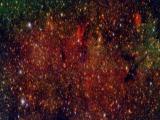
|
15/11/2021 - 19/11/2021
IAA Severo Ochoa Advanced School on Star Formation Granada |
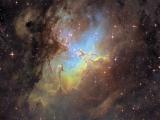
|
29/11/2021 - 03/12/2021
2nd IAA-CSIC Severo Ochoa School on Statistics, Data Mining, and Machine Learning Granada |
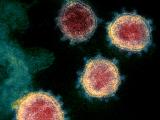
|
10/08/2021
New technique to detect, without contact, viruses on surfaces Based on the use of hyperspectral images and data processing with advanced statistics and artificial intelligence, it has been successfully applied in two synthetic models of SARS-CoV-2. The research, which continues in humans, has been funded by the Carlos III Health Institute and has made it possible to patent a technique capable of simultaneously analyzing numerous samples without the need for contact or reagents |

|
02/08/2021
The Perseid meteor shower arrives The Perseids are produced by the impact in our atmosphere of fragments of the meteoroid cloud of Comet 109P / Swift-Tuttle, and are also recorded on the surface of the Moon. During the peak, around August 11, up to fifty perseids per hour can be observed in places away from light pollution |

|
29/07/2021
Small force, big effect: how planets can affect the Sun The Institute of Astrophysics of Andalusia (IAA-CSIC) is involved in developing a theory that supports the hypothesis that planets affect the Sun's magnetic activity. It shows how the small influence of the planets could set a rhythm in a system like the Sun that, if confirmed, would allow events such as solar storms to be predicted more accurately |

|
26/07/2021
The massive star that barely shone upon death The IAA-CSIC participates in two articles that disseminate the discovery of the shortest gamma ray burst (GRB) produced by the death of a massive star ever detected |
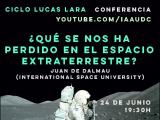
|
24/06/2021 - 19:30
What have we missed in extraterrestrial space? Juan de Dalmau, president of the International Space University and former director of Ariane rocket launch operations in French Guiana, will answer frequently asked questions about space exploration. Juan de Dalmau |
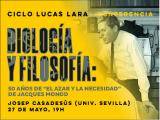
|
27/05/2021 - 19:00
Biology and philosophy. 50 years of Jacques Monod's "Chance and Necessity". In the book "Chance and Necessity", published in 1970, Monod examines the philosophical implications of modern biology. Josep Casadesús |
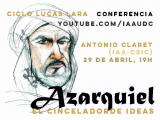
|
29/04/2021 - 19:00
Azarquiel, the chiseler of ideas The history of science in Spain has never been a subject that has been valued in its fair measure, even by Spanish scientists themselves today. In this talk we will focus on the figure of Azarquiel, representative of medieval science. Antonio Claret |

|
25/03/2021 - 19:00
Einstein and General Relativity. The beginning of modern cosmology The General Theory of Relativity has represented, together with quantum physics, the beginning of the so-called modern physics. Jordi Cepa Nogué |
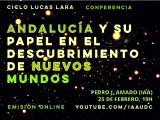
|
25/02/2021 - 19:00
Andalusia and its role in the discovery of new worlds In twenty-five years we have gone from thinking that our Solar System was the only one in the Galaxy to knowing that there are thousands of planets already detected and that there could be billions out there. Pedro J. Amado |
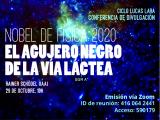
|
29/10/2020 - 19:00
Nobel Prize in Physics 2020: the black hole in the Milky Way galaxy Andrea Ghez and Reinhard Genzel were awarded the Nobel Prize in Physics 2020 for their discovery of the massive black hole at the center of the Milky Way. In my talk I will review the history of their research work from a front-line point of view (having worked closely with the two researchers on this topic). I will explain the methods and measurements they used and the strength of their results. Rainer Schödel |
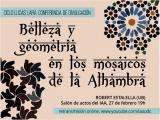
|
27/02/2020 - 19:00
Beauty and geometry in Alhambra mosaics Dissemination conference, Lucas Lara cycle. Robert Estalella |
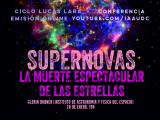
|
28/01/2021 - 19:00
Supernovae: the spectacular death of stars A star that goes out in the universe ending its life as a supernova is a source of everything but darkness. Gloria Dubner |
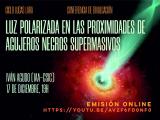
|
17/12/2020 - 19:00
Polarized light in the vicinity of supermassive black holes Relativistic jets produced by supermassive black holes are the most energetic astrophysical objects known and can be observed up to enormous distances and very early ages in the universe. This lecture will focus on these objects, and more specifically on their main characteristics and the extra information provided by studying the polarized light they emit, as well as the main questions that remain to be answered to fully understand them. Iván Agudo |

|
26/11/2020 - 19:00
The Symbolic Primate. How language and culture made us human Humans diverged from our closest relative, the chimpanzee, about seven million years ago, a relatively short time from an evolutionary point of view. Biological continuity with the chimpanzee is evident in many physiological and behavioral aspects; equally evident is the cognitive gap between the two species. In this talk I will attempt to outline the process of hominization based on data from paleontology, genetics, bioinformatics,... Pablo Rodríguez Palenzuela |

|
20/09/2021 - 23/09/2021
SO Instrumentation School: III. Beckhoff Motion Control Granada |
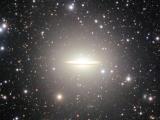
|
21/07/2021
The enigmatic assembly process of the Sombrero galaxy The Sombrero galaxy, a strange hybrid between a spiral and an elliptical galaxy, has been observed in detail to look for clues about its formation process. A large elliptical structure surrounding the galaxy, the product of a minor merger with another galaxy, has been characterised, but the origin of its shape remains unknown |
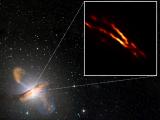
|
19/07/2021
The Event Horizon Telescope (EHT) pinpoints the central black hole of the galaxy Centaurus A The EHT collaboration, in which the IAA-CSIC participates, shows in unique detail the heart of Centaurus A, from which gigantic jets of matter emerge, giving it its characteristic appearance. |
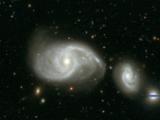
|
15/07/2021
MeerKAT discovers a group of galaxies hidden in a well-studied region Su abundancia en hidrógeno neutro apunta a que se trata de un grupo de galaxias en proceso de formación |

|
16/09/2021 - 12:30
Precision cosmology: now what? The standard cosmological model (the LCDM model) has been established and its parameters are now measured with unprecedented precision. This model successfully describes observations from widely different epochs of the Universe, from primordial nucleosynthesis all the way to the present day. However, there is a big difference between modelling and understanding. The next decade will see the era of large surveys; a large coordinated effort of... Dra. Licia Verde |
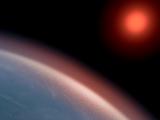
|
30/06/2021
CARMENES instrument finds two new planetary systems formed by Earths and super-Earths The Institute of Astrophysics of Andalusia (IAA-CSIC) leads the detection of what, according to the data, is the most common type of planetary systems around dwarf stars, the most common in the Milky Way |
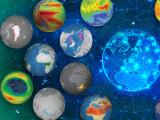
|
18/06/2021
CAIRT mission, with the participation of the IAA-CSIC, candidate for ESA's Earth Explorer 11 programme The mission will focus on processes combining atmospheric circulation, composition, space weather and regional climate change, and will provide critical observations not available with existing or planned satellites |

|
22/07/2021 - 12:30
Revealing cosmic magnetism with the Square Kilometre Array and its pathfinders Magnetism is an enigmatic but crucial element of our Universe. The structure and strength of magnetic fields are important for a full understanding of astrophysics over a tremendous range of scales: from stellar systems, to star forming regions, the properties and evolution of individual galaxies, galaxy groups and clusters, and even as a major element of the Cosmic Web. The Square Kilometre Array (SKA) promises to deliver a revolutionary view... Dr. George Heald |

|
01/07/2021 - 12:30
SO Colloquium: Interstellar planetesimals: 1I/Oumuamua and 2I/Borisov Extensive surveys of extrasolar planets and of circumstellar disks around nearby stars show that planets and dust-producing planetesimals, similar to the asteroids, Kuiper belt objects and comets in our solar system, are ubiquitous around others stars. The planetesimal population of the young solar system was very numerous initially but the majority of the objects ended up ejected due to gravitational perturbations with the planets and other... Dra. Amaya Moro-Martín |
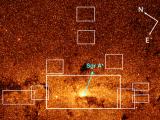
|
08/06/2021
IAA researchers publish the most detailed star catalogue of the Galactic Centre The GALACTICNUCLEUS project will make it possible to study the stellar population surrounding the supermassive black hole at the Galactic Centre in unprecedented detail. The work, led by the Institute of Astrophysics of Andalusia, offers the most extensive census of stars in the Galactic Core recorded to date |

|
09/06/2021 - 10/06/2021
Scientific writing and presentation in astronomy On Line |

|
24/05/2021
Juice mission prepares for its extreme environmental test JUICE, a European Space Agency (ESA) mission to be launched in September 2022, will study Jupiter and its moons to analyse the possibilities for the development of life around gas giant planets. The Institute de Astrophysics de Andalusia (IAA-CSIC) is participating in two of the mission's instruments, the GALA laser altimeter and the JANUS camera |
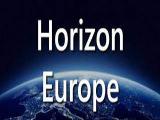
|
09/06/2021 - 09/06/2021
Horizon Europe: Workshop on RESEARCH INFRASTRUCTURE On line |
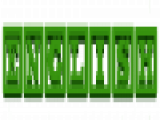
|
21/06/2021 - 25/06/2021
English for Academic Purposes - an online workshop series for young researchers On line |

|
08/06/2021 - 16:00
K-band interferometric imaging of the M-type Mira star ‘R Car’ The final stage of low to intermediate-mass stars, also known as the asymptotic giant branch (AGB), presents circumstellar envelopes (CSE); however the mechanisms that lead to the formation of these structures, at least in M-type AGBs, are still not well understood. In order to grasp the characteristics of the CSE, it has been found that the CO molecule plays an important role due to its stability against dissociation, making it a tracer of the... M.Sc. Abel Rosales-Guzmán |

|
30/04/2021
Presentation of the project Hola Tierra The Institute of Astrophysics of Andalusia (IAA-CSIC) welcomes the presentation of the project of the musician Antonio Arias based on the poems of the astronaut Al Worden. The project, which has the participation of the Cervantes Institute and the IAA-CSIC, includes an album, a book and a documentary |
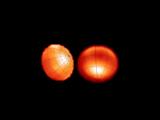
|
26/04/2021
A method to study distorted white dwarf stars is developed The IAA-CSIC is leading a study to determine the properties of stars that, either because of rapid rotation or because they are in a very compact double system subject to strong tidal forces, show a flattened shape |
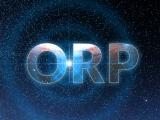
|
16/04/2021
OPTICON-Radionet PILOT (ORP), the largest astronomy network in Europe, is born Two astronomy networks come together to form the largest collaborative terrestrial astronomy network in Europe |
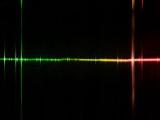
|
14/06/2021 - 14/06/2021
An Introduction to IFU Spectroscopy On line |
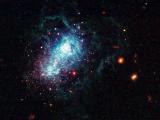
|
12/04/2021
What ignites the helium halos of early galaxies remains a mystery A study looks at the galaxy IZw18, an analogue of the first galaxies that appeared in the universe, for the origin of the radiation that produces a helium halo around it |

|
10/06/2021 - 01/07/2021
Ansys Workbench for Scientific Instrumentation Online |
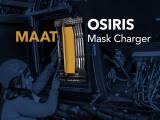
|
30/03/2021
MAAT: new “eyes” for the OSIRIS instrument of the Gran Telescopio Canarias (GTC) MAAT, a visiting GTC instrument in the preliminary design phase, will bring the technique known as integral field spectroscopy to the OSIRIS instrument |
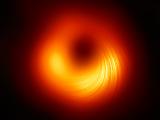
|
24/03/2021
Astronomers Image Magnetic Fields at the Edge of M87’s Black Hole The Event Horizon Telescope reaches a new milestone in astronomical observation by analyzing M87's supermassive black hole in polarized light |

|
11/05/2021 - 12:30
Is the Bremer Deep Field Ionised at z=7? The talk will show that the population of star forming galaxies in the Bremer Deep Field (BDF) has formed two large ionised bubbles. The sources in the BDF have been completed with a set of expected, though not detected, low luminosity sources at z ~ 7. We have estimated the number of ionising photons produced per second by the different star forming galaxies in the BDF and have compared it with the number that would be required to reionise... Jose Miguel Rodriguez Espinosa |

|
10/06/2021 - 12:30
SO Webloquio: Auroral Radio Emission in stars and exoplanetary systems In recent years, an interesting type of coherent radio emission has been detected in a wide variety of stars across the HR diagram, from hot magnetic A-B MS stars to Ultra Cool dwarfs: the Auroral Radio Emission (ARE), previously observed by spacecrafts in the magnetosphere of planets of the Solar System. Very different objects are showing the same phenomenon. What do they have in common? The first star with ARE was CU Virginis, an early type... Dr. Corrado Trigilio |

|
10/03/2021
Observed for the first time a jet of gas as it emerges from the central star of a planetary nebula Thanks to MEGARA instrument of the Gran Telescopio Canarias, researchers from the Institute of Astrophysics of Andalusia (IAA-CSIC) have observed and analyzed the jet of NGC 2392, which points to the existence of a companion star |

|
28/04/2021 - 30/04/2021
SO instrumentation school: High level sinthesys for Xilinx FPGAs using Vivado HLS On line |

|
02/03/2021
Researcher Mirjana Povic receives the Jocelyn Bell Burnell Award from the European Astronomical Society Researcher at the Ethiopian Institute of Space Science and Technology and a vinculated doctor to the Institute of Astrophysics of Andalusia, she investigates the formation and evolution of galaxies. She works in the development of science and education in Africa, with a special focus on the role of women, and has coordinated and participated in projects in Ethiopia, Uganda, Rwanda, Tanzania, South Africa, Kenya and Ghana |

|
07/04/2021 - 07/04/2021
Matplotlib for Beginners - A Brief Severo Ochoa Workshop Online |

|
23/02/2021
The Exoplanet Revolution Didier Queloz, 2019 Nobel Prize in Physics for the discovery of the first exoplanet around a star similar to the Sun, will give a seminar on the planetary systems found to date and their implications for our vision of the universe |

|
17/06/2021 - 12:30
SO Webloquio: Star-formation and accretion in galaxies from near to far: the LeMMINGs and eMERGE e-MERLIN legacy programmes Radio emission provides a uniquely powerful and unobscured probe of the two key physical processes underway in, and powering, galaxies and their evolution: Accretion on to their central SMBH, and star-formation processes. To explore these processes, and their role in galaxy evolution, we require very high resolution (sub-arcsecond or better), sensitive imaging at radio wavelengths across large samples of galaxies in both the local and distant... Dr. Rob Beswick |